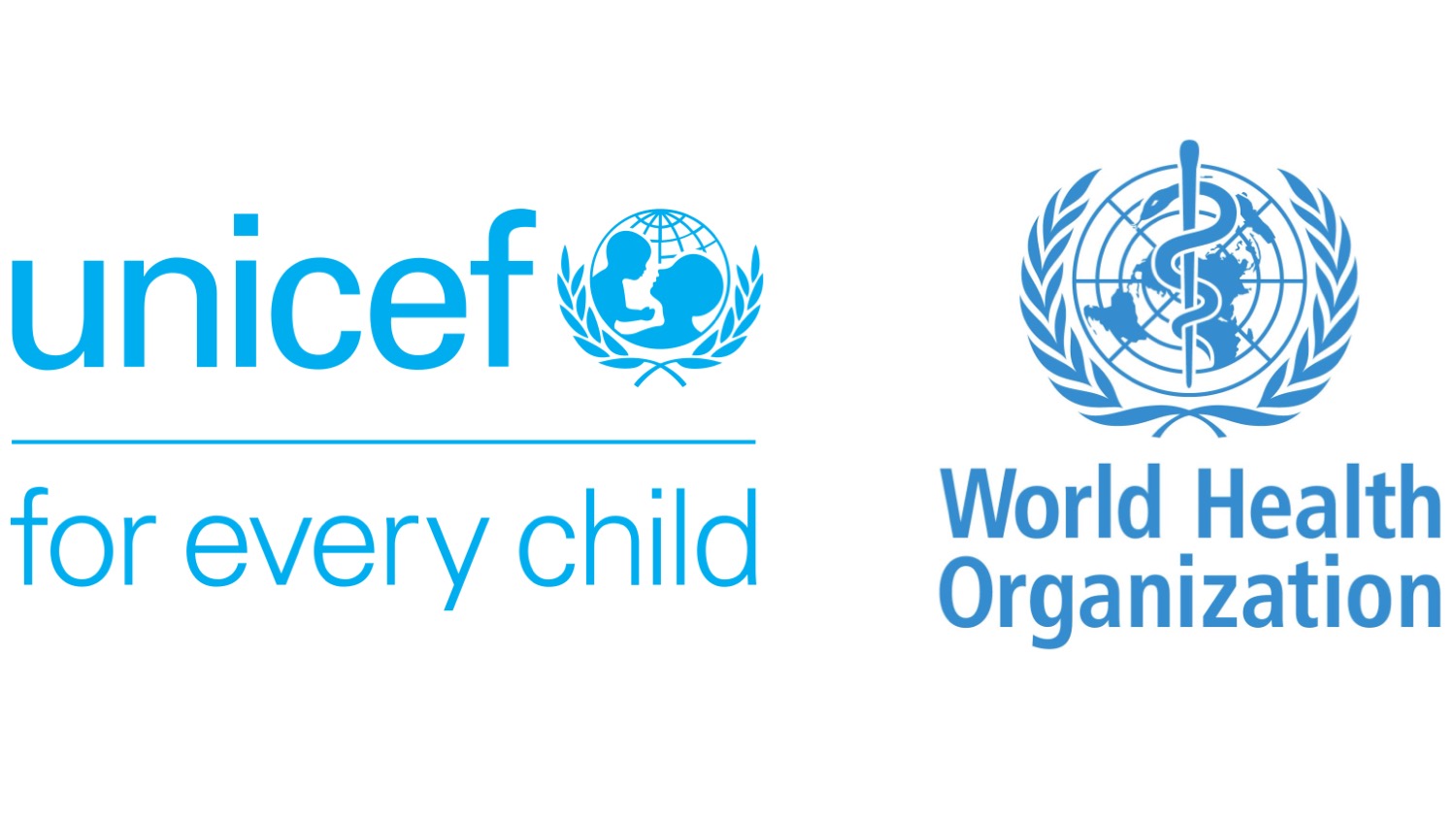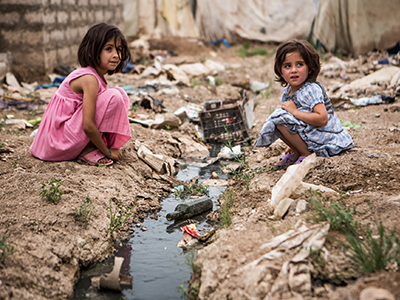© UNICEF/UNI141748/Schermbrucker

This interactive course has been developed from the World Health Organization’s (WHO) training package on children's environmental health for the health sector. It is a comprehensive set of internationally harmonized and peer-reviewed materials on the most relevant and pressing issues on children's environmental health. Participants will increase their capacity to recognize, prevent, diagnose and manage children’s conditions related to an array of environmental threats. For additional resources, visit the Children's Environmental Health Collaborative.
| This course is available in the following languages: | |
|---|---|
| English | Introduction to Children's Environmental Health |
| French | Introduction à la santé environnementale des enfants |
| Russian | Введение в экологическое здоровье детей |
| Spanish | Introducción a la salud ambiental infantil |
Learning outcomes
At the end of this course you will be able to:
- Describe the influences of environmental factors on children’s health, development and well-being
- Evaluate children’s unique vulnerability to environmental hazards
- Recognize signs, symptoms and diseases linked to existing and emerging environmental risk factors
- Take a paediatric environmental history
- Identify and access information on paediatric environmental threats
- Discuss environmental risks proficiently with patients, families, policy-makers, educators and the community, providing understandable, concise information about potential threats and risk-reduction strategies
Audience
- Frontline health workers, both public and private
- Students in medical and nursing colleges
- Policy makers and managers in health ministries, departments and agencies
- UNICEF and WHO staff
Length
This is a self-paced course with no time limit. Each module is estimated to take about 2-3 hours to complete.
Methodology
The course contains a course overview plus 10 modules that should be taken in sequential order to maximize learning. Each module is broken down into several lessons and will take about 2-3 hours to complete.
Components of modules include:
- Learning objectives and outcomes
- Up-to-date global data, maps and graphics
- Videos that illustrate the importance of healthy environments for children
- Interactive learning features, including opportunities to explore country-specific children’s environmental health data
- Case examples that highlight ways to reduce children’s environmental exposures
- Take-home messages
- Practical guidance, tools and downloadable resources for health workers
- Full set of references
- Quizzes to assess knowledge
- Accessible content with complete instructions for keyboard navigation
Learners who wish to earn a digital certificate of completion from UNICEF and WHO are required to score 80 per cent or higher on all quizzes and complete the end-of-course survey.
Structure
This course is an introduction to the principles and interventions needed to protect children’s health from environmental hazards, including air pollution, chemicals, heavy metals, inadequate water, sanitation and hygiene and climate change. This course is composed of these modules:
1. Course Overview
2. Why Children: The Global Environment and Children’s health
3. Chemicals and Children's Health
4. Lead and Children's Health
5. Mercury and Children's Health
6. Pesticides and Children's Health
7. Electrical/Electronic Waste and Children's Health
8. Air pollution and Children's health
9. Global Climate Change and Children's Health
10. Water, Sanitation and Hygiene (WASH) and Children's Health
11. The Paediatric Environmental History
Acknowledgements
UNICEF and WHO acknowledge the work of all contributors and reviewers to the WHO training package for the health sector, on which this e-course is based. Please see individual modules for detailed acknowledgements.
Overall guidance and direction of e-course: Desiree Narvaez (UNICEF), Abheet Solomon (UNICEF), Marie-Noël Bruné Drisse (WHO) and Lesley Onyon (WHO).
Review and adaptation into e-course format: Maria Brown (UNICEF), Desiree Narvaez (UNICEF), Julia F. Gorman (WHO), Marie-Noël Bruné Drisse (WHO), Madeline West (UNICEF) and Jose Bueno (UNICEF).
Design, visualization, editing and production: QUO, Small World Stories and Annalisa Corsi (WHO)Module cover photo copyright information:
Course Overview: © UNICEF/UN0349180/Noorani
Why Children: The Global Environment and Children’s Health: © UNICEF/UN0215255/Schermbrucker
Chemicals and Children's Health: © UNICEF/UN0213860/Phelps
Lead and Children's Health: © UNICEF/UN0236711/Seng
Mercury and Children's Health: © UNICEF/UN0725175/Yusuf
Pesticides and Children's Health: © UNICEF/UN0713629/Hudak
Electrical/Electronic Waste and Children's Health: © UNICEF/UN0319200/
Air Pollution and Children's Health: © UNICEF/UN0538989/Panjwani
Global Climate Change and Children's Health: © UNICEF/UN0144148/Abramson
Water, Sanitation and Hygiene (WASH) and Children's Health: © UNICEF/UN0713581/Dejongh
The Paediatric Environmental History: © UNICEF/UN0844466/
Evaluation and Certificate: © UNICEF/UN0348802/Abdul
Disclaimer
© UNICEF and WHO, 2024
This eLearning course is intended for training health workers on the relationship between children's health and the environment. The course is designed for self-paced learning.
The designations employed and the presentation of the material in this eLearning course do not imply the expression of any opinion whatsoever on the part of UNICEF or WHO concerning the legal status of any country, territory, city or area or of its authorities, or concerning the delimitation of its frontiers or boundaries. Dotted and dashed lines on maps represent approximate border lines for which there may not yet be full agreement.
The mention of specific companies or of certain manufacturers’ products does not imply that they are endorsed or recommended by UNICEF or WHO in preference to others of a similar nature that are not mentioned. Errors and omissions excepted, the names of proprietary products are distinguished by initial capital letters.
All reasonable precautions have been taken by UNICEF and WHO to verify the information contained in this eLearning course. However, this course is made available without warranty of any kind, either expressed or implied. The responsibility for the interpretation and use of the course lies with the reader. In no event shall UNICEF or WHO be liable for damages arising from its use.
Permission is required to reproduce any part of this eLearning course. Requests for permission should be addressed to nyhqdoc.permit@unicef.org.
Contact details
Content issues: ceh@unicef.org
